#catch 22 1970
Text
On February 3, 1971 Catch-22 debuted in France.

#catch 22#catch 22 1970#joseph heller#mike nichols#alan arkin#black comedy film#satire#satirical film#gallows humor#cult classic#war movie#wwii movies#anti war movies#yossarian#movie art#art#drawing#movie history#pop art#modern art#pop surrealism#cult movies#portrait#cult film#daisies
1 note
·
View note
Photo
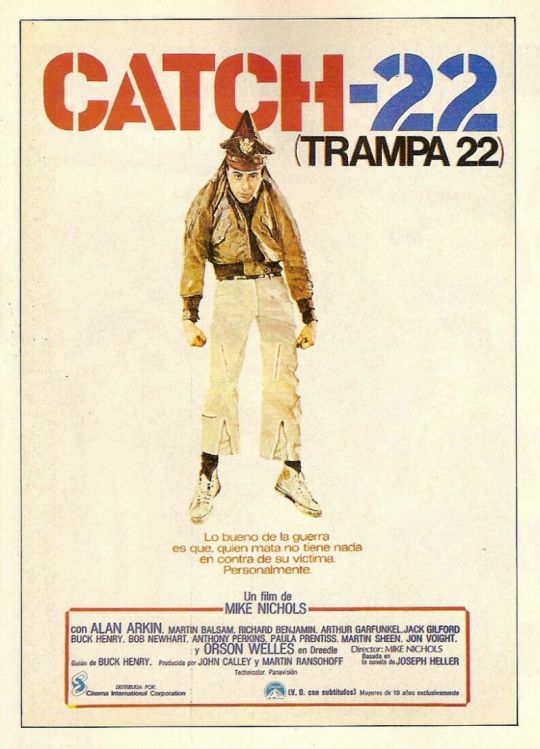
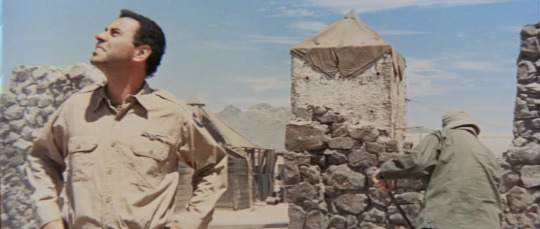
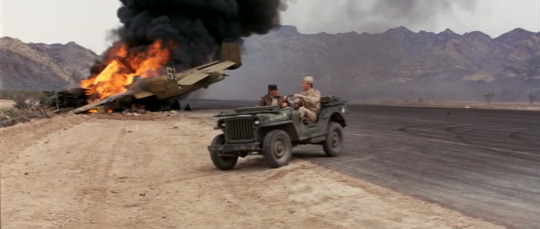


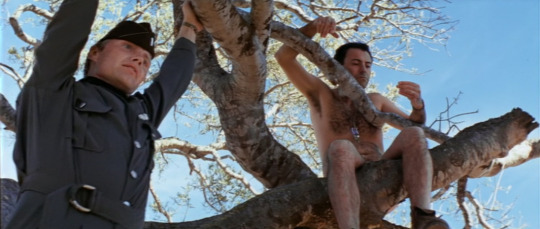
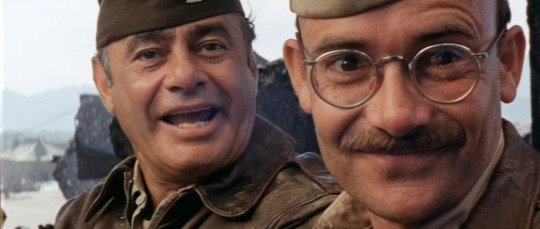
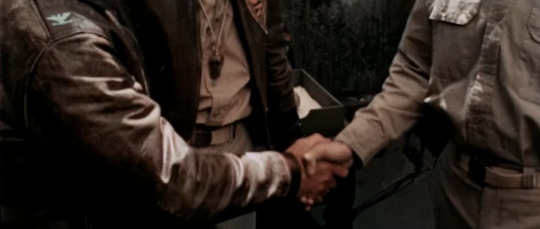

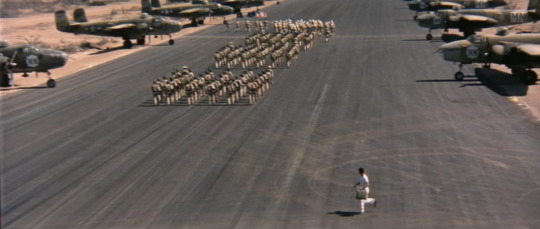
Catch-22 by Mike Nichols (1970)
#movie#catch-22#mike nichols#joseph heller#alan arkin#martin balsam#richard benjamin#art garfunkel#buck henry#jack gilford#anthony perkins#orson welles#martin sheen#jon voight#paula prentiss#Susanne Benton#movie 1970#recommend
121 notes
·
View notes
Text

When you can tell Alan Arkin's wife wrote the book...
Source: https://archive.org/details/crazyeights0000dana/page/104/mode/2up
#i was trying to look up information on catch-22 the movie on internet archive and found this#also depresses me a bit how much the 1970 movie gets shit on#c'mon people it's not THAT bad#anyway this is a young adult novel written by barbara dana who was arkin's wife at the time#she has quite a few ya novels on internet archive including one about joan of arc who she happened to play onstage#barbara dana#alan arkin
3 notes
·
View notes
Text
I finally replaced my old copy of Catch-22
#my original copy of catch-22 was a paperback from 1970 coinciding with the film release#it was p fragile
1 note
·
View note
Text
youtube
Cinco curiosidades que aconteceram no mundo do cinema em 1970 e que você provavelmente não sabia!
#1970#70's movies#airport#airport movie#burt lancaster#catch 22#imax#christine jorgensen#love story#ryan o neal#ali macgraw#paramount pictures#the christine jorgensen story#Youtube
1 note
·
View note
Text
#notable deaths#obituaries#deaths (obituaries)#in memoriam#obituary#hollywood#1970's#1960s#movies#broadway#catch 22#little miss sunshine#in laws#alan arkin
1 note
·
View note
Text
Random Doctor Who Facts You Might Not Know, Part 27
The Eleventh Doctor once mentioned that he had gotten married a lot. One of those marriages might have been to Captain Jack Harkness, but he wasn’t sure since there were so many people in the room at the time.
Cricket is a leftover race memory from the gruesome Krikkit Wars. The Krikkitmen wore outfits similar to human cricket uniforms. The fact that this outfit was recognizable by many as that worn by those who wanted to wipe out the rest of the universe apparently did not stop the Fifth Doctor from wearing precisely that outfit.
The Terrible Zodin is the third most wanted criminal in the galaxy after the Master and the Rani.
Martha Jones blogged about at least a few of her TARDIS adventures on MySpace.
The Eighth Doctor continuously lied to his companion Lucie Miller about her aunt. Her aunt had long ago been replaced with a Zygon copy, and she only found out when she was comatose and overheard them talking about it while having an out of body experience.
There is an opera based on the Doctor.
The Doctor - and probably other Time Lords - have two more ribs than humans do.
Ace once managed to lift the TARDIS (albeit an alternate universe one) with a single hand while she had a broken arm.
A Gallifreyan expletive is "Otherf-" (he was cut off but you can guess the rest).
Soul catching is a Time Lord rite in which a Time Lord would transfer their mind into that of another before assimilating into the Matrix.
The Eighth Doctor also had a sexual encounter with Bernice Summerfield.
The Third Doctor recalled never being taught Venusian aikido. He theorized that he had learned it in a previous life before the Doctor existed.
It is possible to swap bodies while in Gallifreyan telepathic contact.
N-Space has been referred to as the Five Hundred and Third Universe.
Queen Elizabeth I originally had the Tenth Doctor tortured and sentenced to beheading as a spy. She had given him a stay of execution for a picnic, during which the Doctor proposed to her.
Kate once witnessed the Fourth Doctor get his scarf caught in a door. He had thought he was caught in some sort of force field.
Lolita (the Master's first TARDIS) believes that Time Lords were created by her mother (the Matrix) in order to give TARDISes a purpose.
The Fifteenth Doctor took Ruby Sunday to Manchester in the future. While he was telling her all about figures from Manchester's history, oblivious to his surroundings, Ruby noticed that they were standing on tram tracks and were about to be run over.
Ohm is an old, mad god of the Time Lords.
Before crashing into Isaac Newton's tree, the out of control TARDIS took the Fourteenth Doctor and Donna to several places, including the Western Front in 1917, 200000 BC, the Battle of Hastings in 1066, and 1970. All of this while under attack by space-faring squid creatures.
Part 1, 2, 3, 4, 5, 6, 7, 8, 9, 10, 11, 12, 13, 14, 15, 16, 17, 18, 19, 20, 21, 22, 23, 24, 25, 26, 27, 28
#doctor who#dr who#dw#classic who#new who#eighth doctor#fifth doctor#big finish#big finish doctor who#big finish audios#dw eu#doctor who eu#doctor who expanded universe#eleventh doctor#jack harkness#bernice summerfield#fifteenth doctor#fourteenth doctor#ruby sunday#donna noble#martha jones#tenth doctor#the master#the rani#third doctor#ace mcshane#lucie miller#the other#kate lethbridge stewart#fourth doctor
145 notes
·
View notes
Note
Asking a few people this! If the turtles weren't from New York, where would you like for them to live? What city or state or even country?
Whoa! I love this question!
Okay, so my choice is Los Angeles. I no longer live there, but it was my second home and I plan on moving back once my parents are gone. I was a transplant, though, so take all this with a grain of salt. Or maybe some lifelong/longtime locals can chime in and build off this!
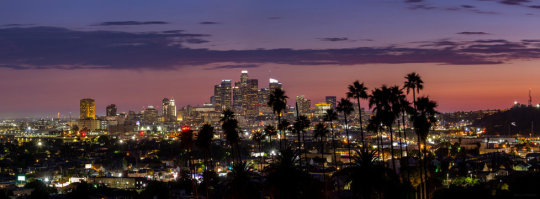
The turtles traditionally travel around NYC via sewers and rooftops. LA is extremely spread out, though. It’s also a car city, and I think the turtles would embrace the car culture in a couple different ways.
First of all, I think we’d see a lot more of the turtles traveling like the boys did in the grocery shopping montage in Mutant Mayhem:
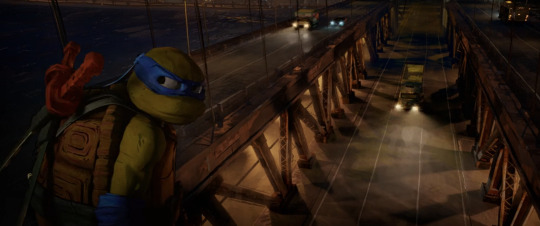


Lots of riding on cars in the dense LA traffic, luring under overpasses to hop a ride on the right truck, hopping over barriers along the shoulder, etc.
Secondly, I can see the turtles fixing up an old van like a 1970s/80s/90s Ford Econoline or Club Wagon or something similar as their turtle tank. I know the 87 series Party Wagon is based on a classic VW bus, but those are just too flashy and iconic for the boys to keep a low profile in modern LA. Whatever they had, it would need to look a little busted up to blend in!




That being said, I think it would be almost impossible for them to go completely unnoticed! I think they would end up in a sort of hybrid situation where they’re known to exist by Angelenos, but everyone outside of Los Angeles thinks they’re just some quirky LA urban legend. But for Angelenos, I think they’d be sort of like P-22 the mountain lion; something everyone knows is there, but only a lucky few ever actually see.

They might actually play this up by hitting up popular tourist attractions or local hotspots to let people catch a glimpse of them. Like they might swing by Griffith Observatory or Santa Monica Pier to psych people out like ‘holy shit did I really just see a turtle?!’ I think they'd get a kick out of it, and their need for secrecy wouldn't be taken as seriously as it is in most TMNT iterations because that matches the more chill vibes of LA.
I think even some locals would take advantage of this and start turtle sightseeing tours like they do celebrity sightseeing tours, and take tourists to places that the turtles have been spotted in the past. The boys might even work with some of these tours under the table and intentionally let themselves be spotted as a side hustle or something lol

Making the turtles Angelenos would also be perfect for way to play up their skateboarding hobby, because LA is a skateboarder’s paradise. There’s tons of skate parks which they’d probably be hitting up at night, but I could also see them taking advantage of the LA river and sketchier places only the most adventurous of humans try to skate.
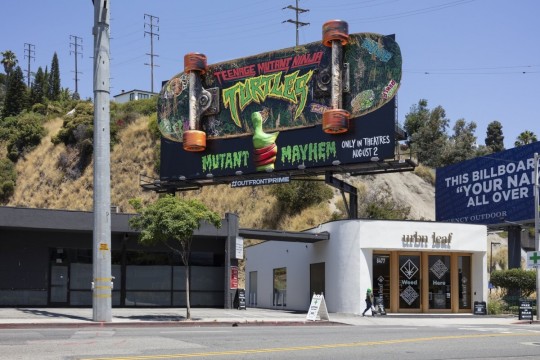
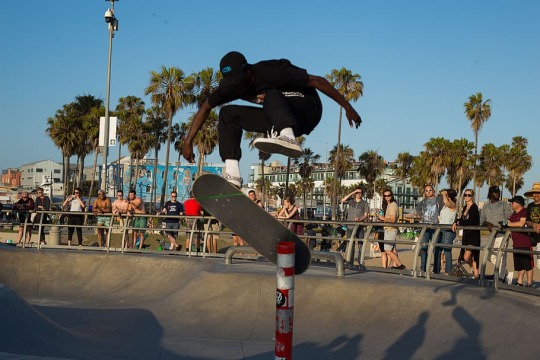
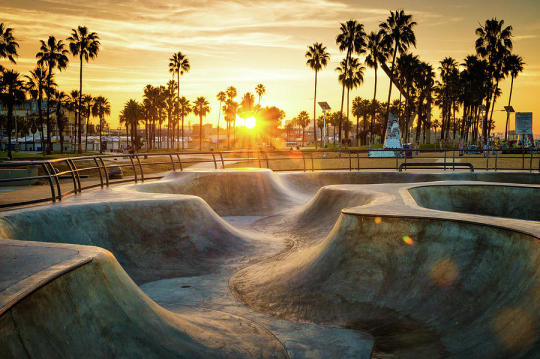



If the turtles were Angelenos, I think they would be based in DTLA since that’s the best urban cover for them. It also gives them access to DTLA’s Metro, which would be the easiest way for them to get from DTLA to the greater Los Angeles area so they wouldn’t always have to rely on using the van.
I could keep going, but I think I’ll leave it here for now and maybe come back to this later!
22 notes
·
View notes
Text

ALAN ARKIN (1934-Died June 29th 2023,at 89).
American actor, director, and screenwriter. In a career spanning eight decades, he received various accolades, including an Academy Award, a British Academy Film Award, a Golden Globe Award, and a Tony Award. For his work on television, he received six Primetime Emmy Award nominations.
Arkin began his career on the Broadway stage, starring as David Kolowitz in the Joseph Stein play Enter Laughing in 1963, for which he won the Tony Award for Best Featured Actor in a Play. He returned the following year acting in the comedic play Luv (1964). For his work directing Neil Simon's 1971 comedic play The Sunshine Boys, he was nominated for the Tony Award for Best Direction of a Play.
Arkin gained stardom with his roles in the films The Russians Are Coming, the Russians Are Coming (1966), Wait Until Dark (1967), The Heart is a Lonely Hunter (1968), Popi (1969), Catch-22 (1970), and The In-Laws (1979). He later took on supporting roles in Edward Scissorhands (1990), Glengarry Glen Ross (1992), Grosse Point Blank (1997), Thirteen Conversations About One Thing (2001), Sunshine Cleaning (2007), Get Smart (2008), and Argo (2012). For his performance as a foul-mouthed grandfather in Little Miss Sunshine (2006), he won the Academy Award for Best Supporting Actor.
Known for his roles on television, memorable performances included Leon Felhendler in Escape from Sobibor (1987), and as Harry Rowen in The Pentagon Papers (2003) for which he earned Primetime Emmy Award for Outstanding Lead Actor in a Limited or Series or Movie nominations. From 2015 to 2016, he voiced J.D. Salinger in the Netflix animated series BoJack Horseman. From 2018 to 2019, he starred as a talent agent in the Netflix comedy series The Kominsky Method, earning two consecutive nominations for the Primetime Emmy Award for Outstanding Supporting Actor in a Comedy Series.
His sons Adam and Matthew are also actors.Adm is best known for playing Dr Aaron Shutt,in the CBS medical drama,Chicago Hope. Alan Arkin - Wikipedia
#Alan Arkin#American Actors#Actors#Little Miss Sunshine#Minion: The Rise of Gru#Stand Up Guys#Notable Deaths in June 2023#Notable Deaths in 2023
84 notes
·
View notes
Text
On January 6, 1972 Catch-22 debuted in Hong Kong.

#catch 22#catch 22 1970#joseph heller#alan arkin#black comedy movie#war film#anti war movie#anti war film#anti war movies#aviation film#satirical comedy#satire#social satire#satirical film#movie art#art#drawing#movie history#pop art#modern art#pop surrealism#cult movies#portrait#cult film
1 note
·
View note
Text
The 50 Best War Films of All Time

This is a tricky genre to try summarize, because of what each individual will choose to classify as a "war film", but I've done my best and tried to focus for the most part on stories set within the thick of actual warfare, rather than dramas taking place afterwards or behind the scenes, and except for a small number of impossible-to-ignore exceptions, very few comedies. Ranked and rated in loose order of quality, high-to-low:
Apocalypse Now (1979) ★★★★★★★★★★
All Quiet on the Western Front (1930) ★★★★★★★★★½
The Great Escape (1963) ★★★★★★★★★½
Ballad of a Soldier (1959) ★★★★★★★★★☆
Schindler's List (1993) ★★★★★★★★★☆
The Cranes Are Flying (1957) ★★★★★★★★★☆
The Boat (1981) ★★★★★★★★½☆
Saving Private Ryan (1998) ★★★★★★★★½☆
Catch-22 (1970) ★★★★★★★★½☆
The Last Bridge (1954) ★★★★★★★★½☆
The Deer Hunter (1978) ★★★★★★★★½☆
The Thin Red Line (1998) ★★★★★★★★½☆
The Killing Fields (1984) ★★★★★★★★½☆
Ice Cold in Alex (1958) ★★★★★★★★½☆
Lawrence of Arabia (1962) ★★★★★★★★½☆
The Bridge on the River Kwai (1957) ★★★★★★★★½☆
Wings (1927) ★★★★★★★★½☆
The Grand Illusion (1937) ★★★★★★★★½☆
Enemy at the Gates (2001) ★★★★★★★★☆☆
Three Kings (1999) ★★★★★★★★☆☆
Good Morning, Vietnam (1987) ★★★★★★★★☆☆
The Big Parade (1925) ★★★★★★★★☆☆
The Destiny of a Man (1959) ★★★★★★★★☆☆
The Bridge (1959) ★★★★★★★★☆☆
Army of Shadows (1969) ★★★★★★★★☆☆
Dr. Strangelove (1964) ★★★★★★★★☆☆
Full Metal Jacket (1987) ★★★★★★★★☆☆
The Burmese Harp (1956) ★★★★★★★★☆☆
Five Graves to Cairo (1943) ★★★★★★★★☆☆
Patton (1970) ★★★★★★★★☆☆
Napoleon (1927) ★★★★★★★★☆☆
The Wooden Horse (1950) ★★★★★★★★☆☆
Zulu (1964) ★★★★★★★½☆☆
Birdy (1984) ★★★★★★★½☆☆
1917 (2019) ★★★★★★★½☆☆
The Tin Drum (1979) ★★★★★★★½☆☆
Valkyrie (2008) ★★★★★★★½☆☆
The Human Condition I: No Greater Love (1959) ★★★★★★★½☆☆
The Human Condition III: A Soldier's Prayer (1961) ★★★★★★★½☆☆
M*A*S*H* (1970) ★★★★★★★½☆☆
Land of Mine (2015) ★★★★★★★½☆☆
The Hurt Locker (2008) ★★★★★★★☆☆☆
Gallipoli (1981) ★★★★★★★☆☆☆
Empire of the Sun (1987) ★★★★★★★☆☆☆
'71 (2014) ★★★★★★★☆☆☆
Born on the Fourth of July (1989) ★★★★★★★☆☆☆
Paths of Glory (1957) ★★★★★★★☆☆☆
Breaker Morant (1980) ★★★★★★★☆☆☆
Inglourious Basterds (2009) ★★★★★★★☆☆☆
Platoon (1986) ★★★★★★★☆☆☆

30 notes
·
View notes
Text

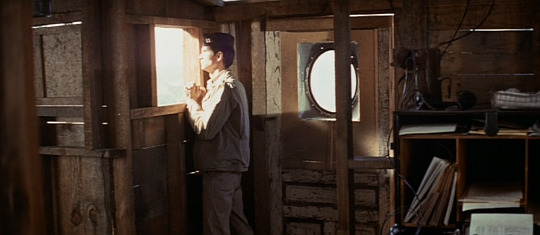
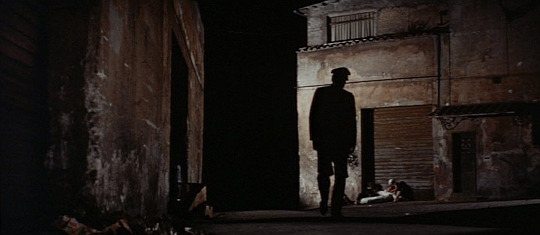

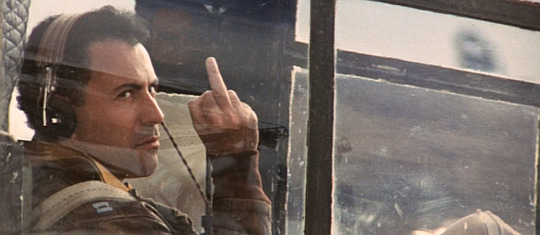
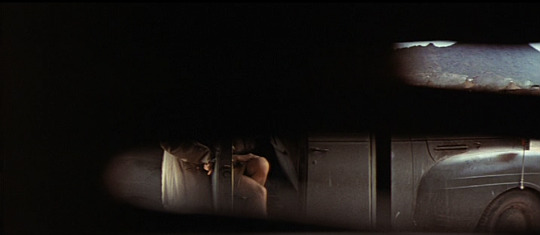
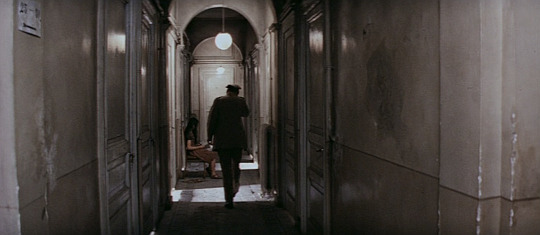

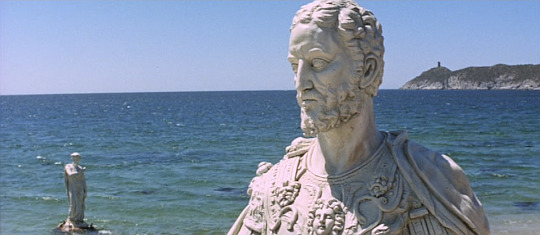

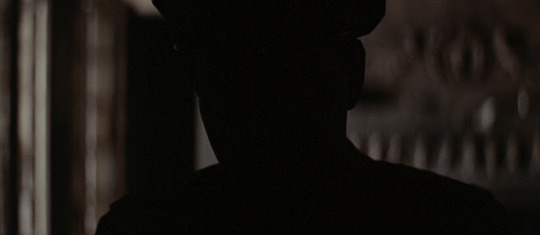

catch-22 (1970) dir. mike nichols
look at that. look’s like a funeral.
yeah, they’re burying that kid that got killed in my plane the other day.
oh? what happened to him?
he got killed.
10 notes
·
View notes
Text
Though British farming is arguably at the most precarious point in its long history – thanks to changes caused by Brexit and food industry subsidies, lack of clear food production policies and increased concern over environmental issues – more women than ever are choosing a career in agriculture and, more importantly, moving into leadership roles.
Back in the 1970s, Holly Collins was studying for her A-levels in Sussex. While her friends sent off their university applications, she wrote to the Royal Agricultural College asking for an entry form, hoping to follow her dream of becoming a farmer.
“They wrote back with the following answer: ‘Dear Miss Collins, we do not admit women.’”
Undeterred, she worked on a farm the following summer: “A lot of the tasks then were manual labour, so I’d just turn up at the farm gate and ask for a job. I was paid much less than the male students I worked with because I was female. The farmer’s father told him that, because I was the hardest worker, he should pay me the same as them – but he didn’t.”
Things, says the 64-year-old who now has her own upland farm, Hollin Bank, at the head of Coniston Water in the Lake District, have improved a lot for women in agriculture since then.
Though British farming is arguably at the most precarious point in its long history – thanks to changes caused by Brexit and food industry subsidies, lack of clear food production policies and increased concern over environmental issues – more women than ever are choosing a career in agriculture and, more importantly, moving into leadership roles.
Minette Batters, the first ever female president of the National Farmers’ Union of England and Wales (NFU), may have stepped down this spring after six years in office, but women are still well represented in the union, with Rachel Hallos, a South Pennines farmer, installed as NFU vice-president and Abi Reader as deputy president for NFU Cymru. The Great Yorkshire Show has just got its first female show director in its 186-year history – dairy farmer Rachel Coates takes over after this year’s show in July. In the field of specialist skills, the UK has also just appointed its first female wool grader. Amy-Jo Barton, 22, is based at British Wool (formerly the British Wool Marketing Board) in Bradford where she sorts wool by hand based on style and characteristics; a job she finds “very therapeutic”.
While women comprised 17% of farmers in 2019, data from the Office for National Statistics for 2023 shows that of the 104,700 registered farmers, 22% are female. In the broader category of managers in agricultural services, women make up 32% of the workforce. According to recent figures from the Higher Education Statistics Agency, 64% of agricultural students are women. For an industry that historically relies on father-to-son succession to pass on land and which used to exclude women from many of its educational establishments, farming has come a long way.
Coates, incoming director of the Great Yorkshire Show, says: “Women have always been the backbone of a farm. Now they’re no longer in the kitchen tied to the Aga, they’re at the forefront of the industry. It’s good to see this take-up of leadership roles.”
Louisa Dines, principal lecturer in agronomy at Harper Adams University in Shropshire, thinks farming has lagged behind in terms of gender diversity but is finally catching up with other industries.
“Farmers’ wives and daughters were always important – farms are typically family businesses and intertwined with home life – but women used to operate below the radar,” she says. “Historically local meetings were in the pub or village hall. Wives often weren’t invited or had to look after the children. Even if they did go, it can be intimidating walking into a room full of men, but new communication platforms – such as social media and video conferencing – have made it easier for women to take part.”
There are more than 14,000 members of the Facebook group Ladies Who Lamb and farmers such as the Yorkshire Shepherdess and the Red Shepherdess have huge followings on TikTok and Instagram. Dines says she recently attended an agritech conference to promote links between women in farming in Poland, Ukraine and England. Previously these women had worked in isolation but not had a sense of community. “It was so interesting to see how far we’ve come.”
Traditions need to change more, though. The average age of a British farmer is 59 and the business is still typically passed down the male side of the family. A 2022 survey in Northern Ireland found that inheritance was the second biggest challenge faced by women in farming. The biggest was male dominance.
Molly Lewis, whose family have farmed sheep on 250 acres of pasture in Powys, Wales, for 350 years, says this attitude is starting to shift. The 20-year-old plans to take over when her father and his brother retire. She splits her time between working in the family business and the local agricultural market.
“In the past, sometimes men felt pressured to take on the farm even if their heart wasn’t in it, but now it goes to whoever is interested. I’ve noticed a lot more women happily getting involved. It feels natural, especially here. We have an open hill farm in the Elan Valley, and do a lot of community work with all our neighbours. You see women and girls on the hills doing the same jobs as the men and no one thinks anything of it.”
Lewis also talks of the community’s fury at the Welsh government’s sustainable farming scheme – the post-Brexit plan for funding the industry which includes ensuring 10% of farmland is under tree cover.
Collins’s farm has low densities of mixed livestock and a nice sideline in educational courses teaching traditional farming skills such as dry stone walling and coppicing. It’s currently host to two masters students researching finance and birdlife. She brought in two women – Megan Jones and Katherine Andrews – to manage Hollin Bank alongside her.
She says she has had difficulties with “a lack of respect” from male farmers. “But I am learning at a late age and from the wonderful young women who work with me that you don’t have to instil fear in others to succeed in this very male world. We try to be warm and encouraging of anyone who is interested. I’m not sure this is a ‘female’ attitude to farming but I suspect it might be.”
None of the three at Hollin Bank grew up in agricultural families, bucking the tradition of succession. While Collins had a “striking ambition” to farm her whole life, her colleagues originally worked in conservation and nature restoration.
“As 70% of the UK is farmland, I wanted to understand how conservation and agriculture intertwine,” says Andrews. “I also believe we need to localise the food economy to save food miles, create jobs and deepen our connection to the land.”
If farming is in crisis it may be this new generation who look to change the status quo who will be able to find a resolution. All of them seem keen to evolve. Coates’s big ambition for the Yorkshire Agricultural Society is to engage young people because “we need to make farming relevant – there are going to be changes in agriculture over the next few years and we need to adapt”.
Dines points to the increased importance of marketing and communication – from farm shops and crafts to environmentally friendly farming practice – “all the public-facing activities at which women excel”.
Jones, who worked in restoration before joining Hollin Bank two years ago, also points to the need for communication within the indusry as well as with the public.
“We need to strengthen food systems that value farmers’ extensive knowledge of the landscapes they work in,” she says. “I think we need to listen to farmers and figure out what works financially and ecologically. How can we build resilient ecosystems?”
The reason so many more women have moved into farming is perhaps best explained when Jones talks about what she enjoys most about her work.
“My favourite thing about working on a farm is the daily and seasonal rhythms. Each day you adapt and respond to the environment and the animals. Days when we move the sheep or cows are always good days, walking with them is like a moving meditation. For someone who spent very little time doing practical work growing up, I find working with my hands very rewarding and empowering – especially as a woman.”
13 notes
·
View notes
Text
#idk if edits are popular on tumblr or whtvr#first edit#catch-22#1960s#1970s#catch 22#fan edit#my edit#catch 22 edit
22 notes
·
View notes
Text
What the Ineffable Husbands call each other - Season 1 edition
Or, how Sadie wasted her bank holiday
OK. I spent the day rewatching season 1 and I have the following statistics on how many times our ineffable husbands called each other by name or by angel/demon. Do with this info what you will.
Notes: Az never called Crowley "Demon" but often reminded him that he was a demon, so I counted those times as well.
I may have missed one or two.
I added a few bonus things cause they're so adorable.
Episode 1.
Crowley calls Aziraphale:
Aziraphale: 2 (1 indirectly)
Angel: 1
The two Aziraphale calls are when Crowley is calling him on the phone. The Angel call, discussing whether anyone would notice the Hellhound.
Times (Az): 26:03, 26:28 (Angel): 41:19
Aziraphale calls Crowley:
Crowley: 2
Demon: 3
The first Demon reminder was in the garden of Eden. The second was outside the bookshop. The third was when they realise the Hellhound has found Adam
He calls him Crowley once outside the bookshop, and once on the bus.
Times (Crowley): 29:43, 39:14. (Demon): 04:10, 29:51, 48:50
Episode 2
Crowley calls Aziraphale:
Aziraphale: 0
Angel: 1
Crowley calls Az "Angel" after dropping off Anathema back in the village
Times (Angel): 44:27
Aziraphale calls Crowley:
Crowley: 1
Demon: 0
He calls him Crowley at the paintballing
Times (Crowley): 38:24
Bonus, at 38:32 Crowley calls himself a demon.
Episode 3
Note: the first half was them through the ages so things are a bit skew-wiff here, but, stick with it. Maybe look at this as evidence of their evolving relationship :3
Crowley calls Aziraphale:
Aziraphale: 1
Angel: 2
He calls him Aziraphale in Mesapotamia. And Angel when he appears in Paris, and when they're arguing in St. James Park and Crowley says "I've got lots of other people to fraternise with". This one seems out of anger rather than a pet name.
Times (Aziraphale): 01:02 (Angel): 17:15 (St James Park only, didn't catch the Paris time, will edit later)
Aziraphale calls Crowley:
Crowley: 14 or 15, see Golgotha note in italics
Demon: 3
Oh boy. Called Crawly/Crowley twice in Mesapotamia, twice in Golgotha (one letting Az know his real name so that might have been Crowley not Az. Bad notes, sorry), once in Rome, once in Wessex, once in Paris, 3 times in St James park, twice in 1970 wassit, and 3 times at the bandstand.
He reminds him that he's a demon or fallen once in Rome, once at St James Park, and once at the bandstand.
Times (Crowley): 01:04, 02:20, 03:08, 03:24, 04:48, 06:33, 13:37, 16:14, 16:49, 16:56, 27:16, 28:27, 51:09, 52:10, 52:47 (Demon): 04:55, 16:04, 51:42
Episode 4
Crowley calls Aziraphale:
Aziraphale: 0
Angel: 2
He calls him Angel when he comes back, and again when he leaves. Both out of desperation I believe. First was out of apology and the second desperate frustration.
Times (Angel): 33:37, 34:22
Aziraphale calls Crowley:
Crowley: 0
Demon: 0
Episode 5
Crowley calls Aziraphale:
Aziraphale: 5
Angel: 0
Best friend (indirectish): 2
3 of the Aziraphale calls were when he was calling for him in the fire in the bookshop, one was when Aziraphale apparited in front of him, and the other was when he stepped out of the burning Bentley. He called Az his best friend during the fire in the bookshop, and one when he was talking to the Az apparition.
Times (Aziraphale): 00:45, 00:48, 00:52, 11:41, 48:57 (best friend): 01:11, 12:01/02
Aziraphale calls Crowley:
Crowley: 1
Demon: 0
Az calls him Crowley when C steps out of the burning Bentley at the airfield.
Times (Crowley): ~48:56
Episode 6
Crowley calls Aziraphale:
Aziraphale: 2
Angel: 1
Both the aziraphale calls were at the airfield. One when he was telling him that its "kick butt, not lick butt" and the other when he was telling him to shoot Adam. The Angel call was when he questioned if this is what the Almoghty planned.
Times (Aziraphale): 04:34, 09:06. (Angel): 25:04
Aziraphale called Crowley:
Crowley: 3
Demon: 0
The first two Crowley calls were to get his attention away from the Bentley and get him to do something. The third was after failed Armageddon (still at the airfield).
Times (Crowley): 03:17, 03:27, 14:56
Observations:
Just some pretty mild observations. Aziraphale didn't call him or remind him that's he's a demon after episode 3. After the Bandstand argument he doesn't do that again in Season 1.
Crowley only calls Aziraphale "Angel" 7 times over the season. He mostly calls him Aziraphale. There's two bonus "best friend"'s as well. It's striking because we hold on to that so much, to the point I feel like it's very much switched in season 2 when he mostly calls him Angel. I think. Season 2 "What the husbands call each other" will take place this week so will be able to determine it then.
He also only calls Aziraphale "Aziraphale" 10 times. 1 indirectly, 3 when he's trying to call him in the fire, and 1 when he's calling him after passing over the Antichrist. So that leaves 5 neutral times he calls him Aziraphale. Which is almost equal with Angel. Except two angels were when he came back to apologise and when he left again. So it seems to be random when he'll call him Angel and when he'll call him Aziraphale, whether there's desperation or emotion behind it or its neutral.
Over to you. Again, use this info as you see fit and draw your own conclusions.
#good omens#ineffable husbands#crowley#aziraphale#good omens season 2#aziracrow#crowley calls Aziraphale angel and its cute
27 notes
·
View notes
